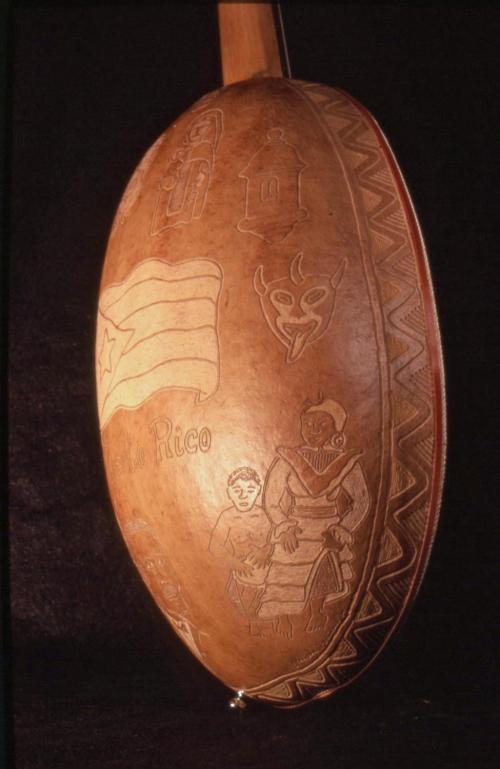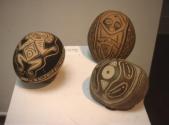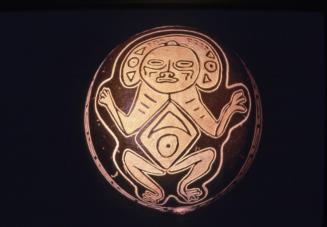Gourd Cuatros
Subject
Graciela Quiñones-Rodriguez
(Puerto Rican)
Date1995-2005
MediumPositive Color Film Slides
ClassificationsGraphics
Credit LineConnecticut Cultural Heritage Arts Program collections
CopyrightIn Copyright
Object number2015.196.1129.1-.2
DescriptionSlide photographs of gourd cuatros made by Puerto Rican artist Graciela Quiñones-Rodriguez.
(.1) Back view of carved gourd cuatro.
(.2) Gourds carved by Graciela Quiñones-Rodriguez.
NotesBiographical Note: Graciela Quiñones-Rodriguez is a Puerto Rican educator, social worker, artist, and luthier who apprenticed with William Cumpiano (Easthampton, MA) and has built cuatros, tiples, and bordonuas. Graciela is also a cuatrista and higüera (gourd) and santos carver. She served as an advisory committee and exhibiting artist and workshop leader for CCHAP’s three Puerto Rican projects, starting as a community scholar with Herencia Taina, CCHAP’s 1998 Taino exhibit project, researching the techniques of higüera preparation and decoration for use as household utensils, ornaments with Taino or political iconography, or musical instruments. She also worked as an artist-presenter for the Massachusetts Cultural Council summer institute on Puerto Rican cultural heritage for Springfield, MA teachers. Graciela is a highly respected arts educator, woodcarver, and singer with the Connecticut Latin music group Tierra Mestiza. She is a Connecticut Commission on the Arts Master Teaching Artist and Artists Fellowship winner. As part of the Southern New England Traditional Arts Apprenticeship Program in Year 3 (2000-2001), she worked with master luthier Bill Cumpiano. Together they built cuatros, tiples, and bordonuas, older forms of Puerto Rican stringed instruments. As part of the apprenticeship they built a cuatro on the basis of a photograph of an unusual form from the early 1900's, which has a bent wood body rather than a hollowed-out base. They demonstrated their partnership work at the Lowell Folk Festival in 2000.(.1) Back view of carved gourd cuatro.
(.2) Gourds carved by Graciela Quiñones-Rodriguez.
Additional materials exist in the CCHAP archive for all these artists and their communities.
Cataloging Note: This project was made possible in part by the Institute of Museum and Library Services MA-245929-OMS-20.
Status
Not on viewGraciela Quiñones-Rodriguez
1999; 2000-2001
Graciela Quiñones-Rodriguez
2004 February 21















